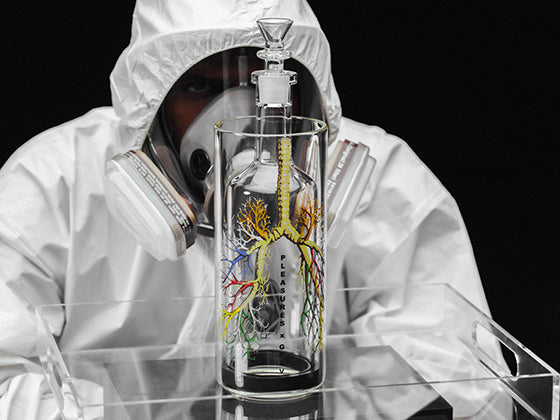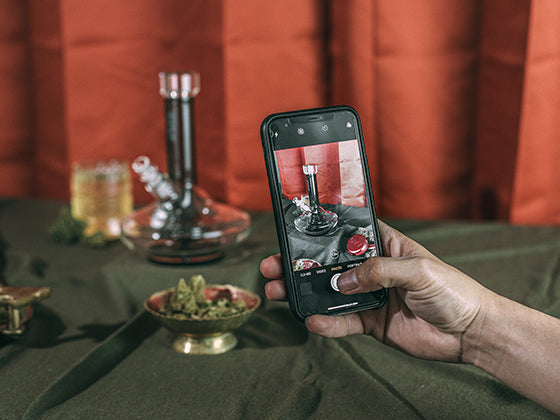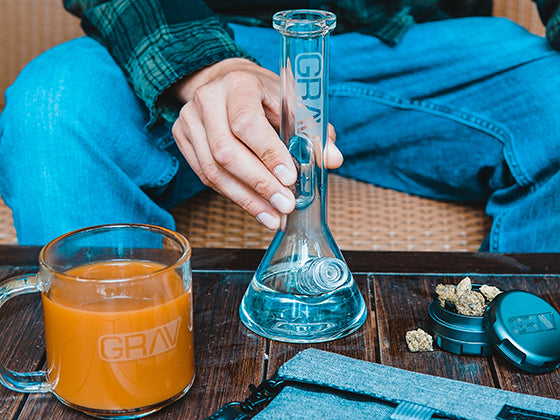How did we get here?
How did we become a nation where 59% of people say that cannabis should be legal for medical and recreational use, and 32% favor medical use only...and still, cannabis is illegal in so many states?
Why are Black people and people of color arrested at dramatically higher rates for all drug offenses than white people, despite equal or lower rates of use?
And why is cannabis regulated like heroin on a federal level?
It’s a long, fascinating, and sometimes painful story.
Origins: Cannabis in America
Long before the Founding Fathers were even a glint in the eyes of democracy, cannabis had been an important medicinal and ceremonial plant in cultures across Asia and the Middle East. It eventually travelled to Europe, and was brought to South and Central America by the Spanish and Portuguese in the 16th century.
Far from being discouraged, the use of cannabis was actively encouraged by enslavers, used to soothe and pacify the enslaved workforce. An ironic beginning.
Over the next few centuries, cannabis was selectively cultivated for its larger flowers and more potent levels of THC. While it made its way to America in some patent medicines, it had yet to gain a foothold as a recreational drug in the U.S.
That began to change during the Mexican Revolution at the beginning of the 20th century. Mexican refugees fled the war to the safety of America, settling in Texas and the southwest. The influx stoked the fires of xenophobia, and rumors of the “Mexican cigarettes” the refugees brought with them began to spread. One Texas state senator charmingly said, “All Mexicans are crazy, and this stuff is what makes them crazy.”
By 1914, the city of El Paso had outlawed cannabis. And the pretense of searching for it gave local police a reason to harass Mexican immigrants. Sound familiar? More cities, and eventually states, followed suit, resulting in a patchwork of conflicting cannabis laws.
As poor Mexican and Black laborers worked together in the border states, cannabis culture spread. Weed travelled to New Orleans, where it was taken up by Black musicians and became part of the jazz lifestyle. And as jazz made its way through America, cannabis did too.
This is how the “Marijuana Menace” first became associated with both Mexicans and Black Americans in the 1920s and 1930s.

Enter Harry J. Anslinger
Who knows what the history of cannabis prohibition would have looked like were it not for a scheming racist named Harry J. Anslinger.
In 1930, this upstanding civil servant was appointed the first Commissioner of the Federal Bureau of Narcotics (FBN) — the precursor to today’s Drug Enforcement Agency. At first, Anslinger was simply after alcohol, heroin, and cocaine users. But when Prohibition ended and he left with just a small number of narcotics users, he needed a “big bad” to justify his department and his job.
With cannabis making Black and Mexican people “forget their place” and now spreading to white youth, he seemed to have found a new enemy. After all, "Reefer,” Anslinger said, “makes darkies think they're as good as white men."
So now, Anslinger had to fight a propaganda war.
True stories of violence had long been falsely connected to marijuana use, stoking a nationwide fervor against the plant. Claims of it leading to increased sexual desire and cases of rape proliferated — while simultaneously stating that overuse would lead to impotence.
Noted racist and newspaper man William Randolph Hearst published stories stating that “marijuana was known in India as the ‘murder drug,’ it was common for a man to ‘catch up a knife and run through the streets, hacking and killing every one he [encountered].’” Another article sported the headline “Evil Mexican Plants that Drive You Insane.”
Fueled by racism, many states enacted piecemeal legislation to make cannabis illegal. Anslinger wanted the states to have more authority in controlling the sale and use of narcotics. So he proposed the Uniform Drug Act, which was to regulate all narcotics at the state level, including cannabis, and give the states the power to prosecute crimes like illegal drug possession. When most states didn’t sign on, he rewrote it, focusing much more heavily on cannabis.
To stir up support, he upped the propaganda. Anslinger claimed that Black men were using marijuana as a sexual stimulant to seduce white girls. He also spread stories of marijuana dens where Black men would lure young white girls for a marijuana-fueled party. Then they’d go insane, murdering everyone in a haze of cannabis.
"You smoke a joint and you're likely to kill your brother," he said.
Anslinger and Co even started referring to cannabis as marijuana or marihuana to make it sound more Mexican.
Some doctors pushed back, doing their own studies to disprove Anslinger’s claims. But Anslinger found a doctor of his own, Dr. James C. Munch. Munch was happy to provide his own opinion on cannabis, claiming it could turn people violent and enraged. He also claimed that all parts of the plant were psychoactive, down to the seeds (which is not true). Dr. Munch even said if birds eat hemp seeds, they’ll stop singing.
And to add a personal spin to his data, the doctor testified under oath that, “After two puffs on a marijuana cigarette, I was turned into a bat.”
The states signed the Uniform Drug Act.

The Marijuana Tax Act
Next in Anslinger’s sights was a federal law. In 1937, he began his campaign for the Marijuana Tax Act.
This law regulated the import, cultivation, possession, and distribution of cannabis, and effectively made recreational marijuana illegal on a federal level. To support prohibition, Anslinger published an article called Marijuana, Assassin of Youth.
It stated, “Not long ago the body of a young girl lay crushed on the sidewalk after a plunge from a Chicago apartment window. Everyone called it suicide, but actually it was murder. The killer was a narcotic known to America as marijuana, and to history as hashish.”
Anslinger also testified before Congress to support the Act. He told all his favorite anecdotes from his “Gore Files” — 200 stories of murder and mayhem that he claimed were directly due to cannabis. 198 of the stories have since been proved to have no connection at all with cannabis. The records for the final two cases couldn't be found.
One of his favorite tales of terror was that of a mentally ill young man named Victor Licata who hacked his family to death. Anslinger asked 30 doctors to confirm the connection of weed to the crime. After review, 29 out of 30 said there was no connection. Guess which doctor’s opinion Anslinger shared with Congress?
The Marijuana Tax Act passed. That very day, Anslinger’s agents were making arrests.
Push Back
Not everyone was convinced by Anslinger and Hearst’s rhetoric. The American Medical Association was against the bill, due to its outrageous tax on the doctors and pharmacists that prescribed cannabis.
Anti-Prohibition New York City mayor Fiorello LaGuardia commissioned a study to test the effect of cannabis on users’ morality. The results, released in 1944, contradicted Anslinger and the FBN’s claims of cannabis-induced insanity and increased sexual urges.
Anslinger was furious. He denounced LaGuardia and the New York Academy of Medicine that conducted the research. Anslinger used his considerable influence to put a stop to further studies on the effects of marijuana. And he went on the offensive against the medical community. In the two years after the Tax Act was passed, the FBN prosecuted over 3,000 doctors who prescribed medical marijuana for doing so “illegally.”
A deal was struck — the AMA conducted another “study” that contradicted the LaGuardia report. Over the next ten years, only three doctors were charged with marijuana-related crimes. Anslinger had the medical community in check.
That’s where we’re leaving our story. To be continued in Racism and Reefer Madness: The History of Cannabis Prohibition Part 2!













